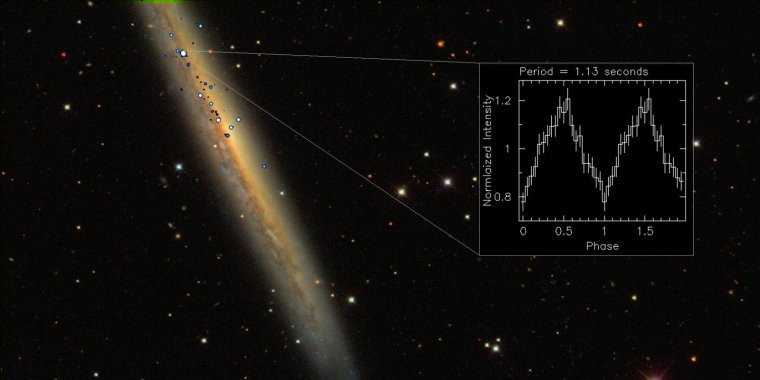| News / Science News |
NuSTAR Helps Find Universe's Brightest Pulsars
There's a new record holder for brightest pulsar ever found -- and astronomers are still trying to figure out how it can shine so brightly. It's now part of a small group of mysterious bright pulsars that are challenging astronomers to rethink how pulsars accumulate, or accrete, material.

NGC 5907 ULX is the brightest pulsar ever observed. ![]()
A pulsar is a spinning, magnetized neutron star that sweeps regular pulses of radiation in two symmetrical beams across the cosmos. If aligned well enough with Earth, these beams act like a lighthouse beacon -- appearing to flash on and off as the pulsar rotates. Pulsars were previously massive stars that exploded in powerful supernovae, leaving behind these small, dense stellar corpses.
The brightest pulsar is called NGC 5907 ULX. In one second, it emits the same amount of energy as our sun does in three-and-a-half years.
The European Space Agency's XMM-Newton satellite found the pulsar and, independently, NASA's NuSTAR (Nuclear Spectroscopic Telescope Array) mission also detected the signal. This pulsar is 50 million light years away, which means its light dates back to a time before humans roamed Earth. It is also the farthest known neutron star.
How these objects are able to shine so brightly is a mystery. The leading theory is that these pulsars have strong, complex magnetic fields closer to their surfaces.
A magnetic field would distort the flow of incoming material close to the neutron star. This would allow the neutron star to continue accreting material while still generating high levels of brightness. (NASA)
YOU MAY ALSO LIKE



